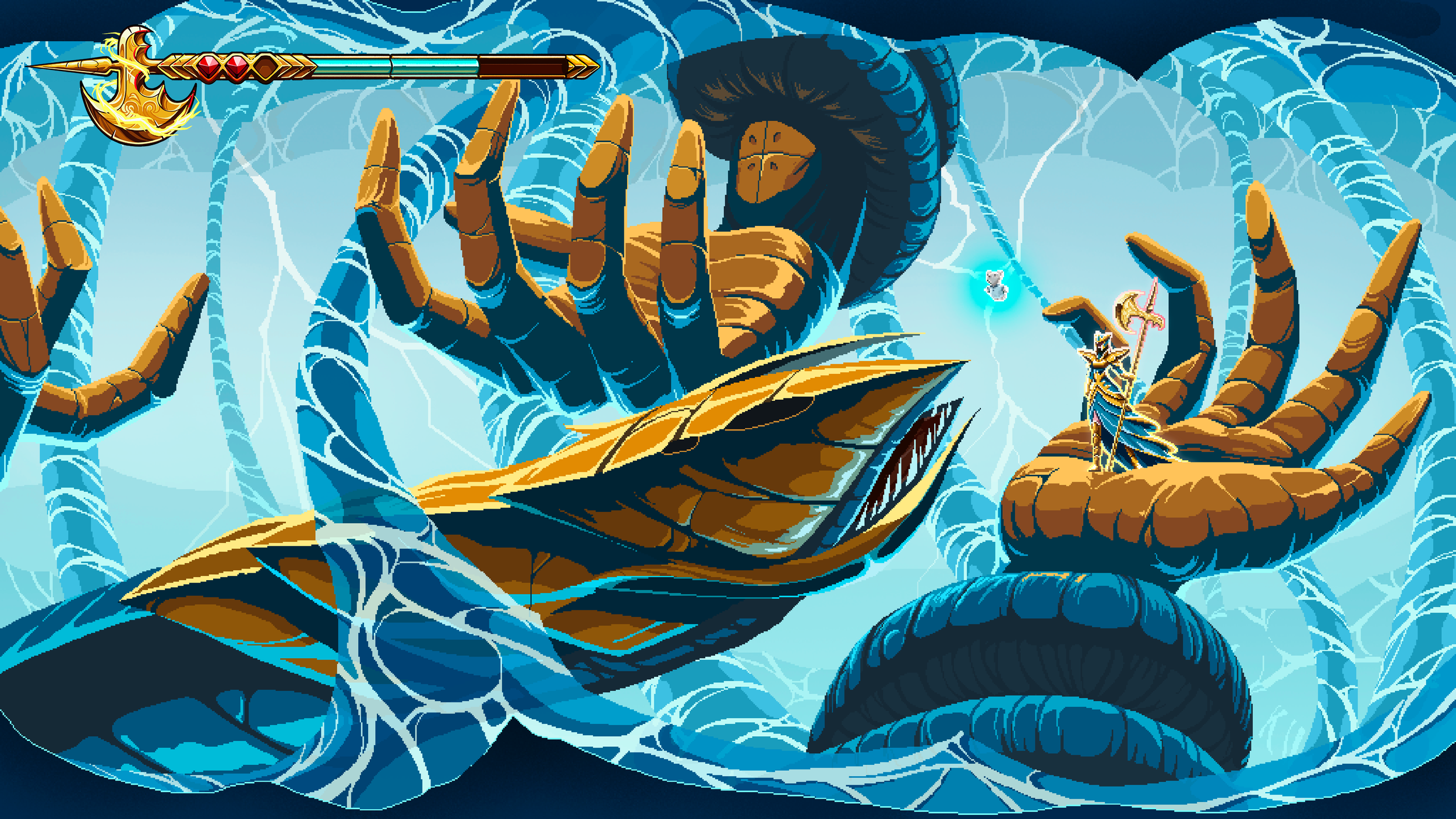9 Years Of Shadows | Review - Samus Casts A Long Shadow
What do you get when you throw Metroid Fusion, Hollow Knight and Castlevania: Aria of Sorrow together? You get 9 Years of Shadows. Taking very obvious but welcome influence from these classic Metroidvanias is something seen often in the indie space these days. But this particular Metroidvania picks and chooses what influences to use in a very smart way. It can be hard to know what parts of these games still hold up and what are just nostalgia, but Halberd Studios has done so admirably and created something special along the way.
When you boot up 9 Years of Shadows, you get an amazing, beautifully animated intro scene. It’s flashy, colorful and gives you a glimpse into some of the abilities and characters you’ll see in the game. After selecting a save slot, you’re given some backstory about the castle you’re exploring and how a terrible curse has seeped from the tower, afflicting all that surround.
Need a hand?
One of your main goals is to find all the elemental armour in the castle. This is a huge part of ability checks and puzzle solving, as each one gives you another ability. A great quality of life mechanic the game has to offer is that you automatically switch to the correct armour (once you unlock it) if you’re in a room or situation where you could potentially make use of it, such as putting on poison-resistant armour in a room full of toxic air. However, there are puzzles where you need to manually switch armours in a room like underwater areas.
Hi, let’s be friends!
The game doesn’t hold your hand, and it does not directly tell you where to go. While it’s fairly clear where you need to go to progress, there’s a plethora of optional content, interesting exploration, and fun puzzles. 9 Years wastes no time getting right into things - once you get your handy teddy bear sidekick, Alpino, you can run right into a boss room if you want. Alpino’s abilities serve as your ranged attack, helping with puzzles in a satisfying and rewarding way, not to mention how well the game controls in general. Movement feels good, albeit a tad slow.
The boss battles are where a lot of the Metroid Fusion inspiration comes to bear. There might not be health bars, but the bosses all start to turn red as you’re whittling down their health. This is a welcome feature, as it’s nice to know when you’re actually getting somewhere in these battles as opposed to being a guessing game. However, you have to learn as you go thanks to attacks that feel impossible to dodge, forcing you to figure out where your opening is, and capitalising on those opportunities. It brought me right back to the feeling of playing the Game Boy Advance when I was a child.
Oh, its a masquerade party? Well don’t I feel silly for leaving my Eyes Wide Shut gear at home.
Part of that great feeling is in the amazing pixel art. It’s incredibly reminiscent of the Castlevania GBA games, and it’s some of the best pixel art in recent memory. Everything looks great, every colour palette feels well chosen, and it creates a great atmosphere of mystery. But the graphics alone didn’t create this wonderful atmosphere. 9 Years of Shadows has a beautiful soundtrack that is entirely it’s own. It’s a relaxing but mysterious, lo-fi-inspired score that only adds to the experience. I don’t think I’ve heard anything quite like it in a video game. As you explore each area, there’s a great accompanying song to go along with it.
While exploring in this genre, it's common to feel lost, but it's usually just a matter of checking the map to see which corridor you haven't explored fully yet. However, this is an area where the game falters somewhat. The map has a legend on it that colour codes save rooms, elevators to new areas, poison rooms, heat rooms, etc. Yet, these don't always work, and some don’t work at all. I went into many save rooms that were not noted on the map, and I went into many rooms filled with water that also weren’t noted. Poison and heat rooms weren’t noted at all. This could potentially be due to playing an early build, but it was still a frustrating flaw.
This game has pretty art.
The game also isn’t without its fair share of crashes. I’m not sure what caused them, but occasionally the game would have an error screen and just close on me after a few seconds. This probably happened about five times in my roughly 20 hours playing the game. It’s not egregious and it certainly didn’t ruin my playthrough, but it was very frustrating when I hadn’t saved for a while or had just beaten a boss.
Despite the handful of issues, I loved this game. The visuals, music, atmosphere, and gameplay - it’s almost a perfect game for me. However, it’s held back by its somewhat broken map and a few crashes. But it’s not often a Metroidvania gets me to play it to 100% completion, and this game did. Once I started playing, I didn’t stop. A casual player could probably beat the game in 10 hours, but I doubled that, just wanting to see everything the game offered me.










